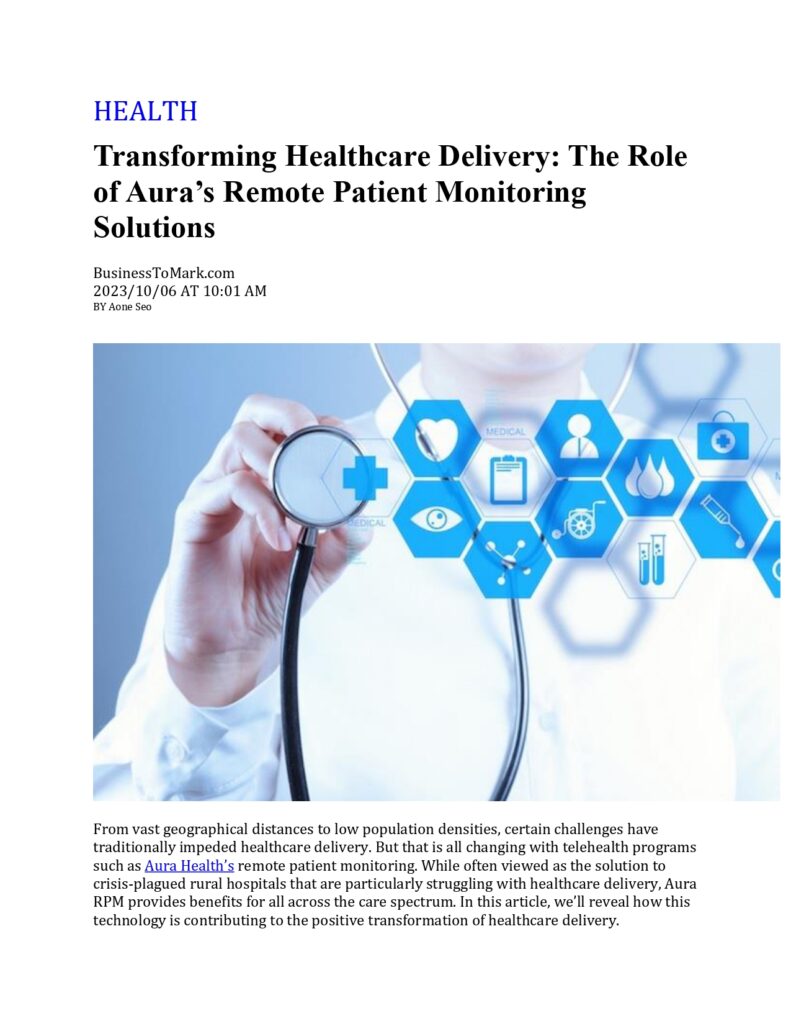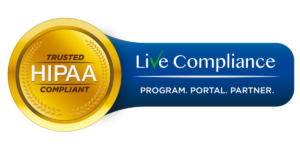From vast geographical distances to low population densities, certain challenges have traditionally impeded healthcare delivery. But that is all changing with telehealth programs such as Aura Health’s remote patient monitoring. While often viewed as the solution to crisis-plagued rural hospitals that are particularly struggling with healthcare delivery, Aura RPM provides benefits for all across the care spectrum. In this article, we’ll reveal how this technology is contributing to the positive transformation of healthcare delivery.

RPM leading the transition to proactive care
Save for screening tests and immunizations, the traditional healthcare system has always been of a reactive nature. This means that you have to get sick before you can get medical assistance. However, the tables have turned with Aura’s remote patient monitoring solutions.
The technology allows physicians to monitor patient data and certain biomarkers, alongside historical records of the patient’s health as well as social determinants of health. All in all, this intricate collection of information allows care providers to pick up early warning signs of disease or adverse health events.
Consequently, this has led to a proactive care model with the following upsides:
- Reduced readmissions by about 76%
- Fewer healthcare expenses
- Fewer hospitalizations
- Better health outcomes at large
With typical readmission costs averaging over $15,000 for each individual, it’s quite clear just how much value can be gained from proactive care enabled by remote patient monitoring.
Taking healthcare delivery beyond hospital walls
We’re heading into a future of hospitals without “walls,” all thanks to RPM. Gone are the days when patients had to schedule regular in-person appointments and traverse large distances to get there. Now, with the power of Aura’s remote patient monitoring solution, care delivery goes to the patient rather than the patient coming to it.
This concept has come to be known as “bedless hospital,” which essentially means that we’re now witnessing care transition from the conventional hospital setting into where the patient is. That could be the patient’s home, a senior care community, or any preferred place of care reception.
The patients can check in with their physicians via virtual communication technology, while doctors can monitor the patient’s health indicators constantly via remote channels without the patient needing to show up for tests in person. Doorstep delivery of medication further seals the deal. With 400 million people worldwide lacking access to basic healthcare, the bedless hospital approach will be pivotal to rectifying this enormous disparity.
Accelerating the speed of care delivery
Healthcare delivery hasn’t always been prompt or timely. Statistics indicate that 76% of care services experienced some sort of delay, which is down to a myriad of issues, some of which entail:
- A dearth of skilled workforce
- Low patient education
- Prohibitive costs of basic health services, and so on
When healthcare delays, the consequences can be grave. It can lead to even more inflated costs, longer hospital stays, and more complicated surgeries.
Aura’s remote patient monitoring solutions are ironing out the bottlenecks that often hold up care. For instance, the technology improves care coordination between multiple partners. This takes away the need for repetitive – and costly- medical services, which are partly responsible for holdups in care delivery.
Additionally, RPM is lowering turnaround time by giving physicians uninterrupted access to patient data, so that clinicians can always act before an adverse event rather than waiting for one to happen.
Plugging staffing shortages for better healthcare delivery
The lack of enough medical personnel is a key reason why many healthcare systems today are grappling with a care delivery crisis. By 2030, things may move from bad to worse as this shortage is projected to hit 10,000,000, according to estimates from the World Health Organization.
Shortages of clinicians affect care delivery in multiple ways. First, when a clinical workflow is spread too thin, it becomes really difficult for care providers to follow up with patients and provide personalized attention to each patient. Additionally, this shortage also compromises patient safety by increasing the length of hospital stay, which in turn raises the risk of healthcare-acquired infections.
We can overcome staff shortages and the challenges they pose to quality healthcare delivery by leveraging Aura Health’s remote patient monitoring solutions. Through the automation of various tasks, the physician’s workload eases up, allowing them to focus more on managing patients rather than tending to data collection, appointment scheduling, and patient monitoring.
The ability of RPM to devolve healthcare is also key to cushioning this workforce shortage. By moving care away from the hospital, emergency rooms become less crowded. Additionally, statistics indicate that nurses save about 10% of their time on average by relying on remote patient monitoring for patient education and engagement.
Be on the winning side of healthcare transformation!
The optimistic hopes the wind will change. The pessimist complains about it while the realist adjusts the sails to take full advantage. Which one are you? Will you sit and watch from the sidelines as Aura’s remote patient monitoring solutions transform healthcare for the better? Be part of next-generation care delivery and take your healthcare to the next level today. Visit the Aura Health Solutions website to learn more about giving your patients the best healthcare experience possible.
